Reducing cow numbers in order to run an easier more sustainable system for their family business was the decision taken by Laois dairy farmer Bobby Hovenden. The dairy farm went from milking 163 cows at peak to 114 in 2022. Like many farmers the Hovendens used the quota removal to push up cow numbers. In the years leading up to quota abolition, around 100 black and white cows were milked. “There is a lot of talk about sustainability in farming. They’re talking about sustainability from an environmental perspective. I made the decision in 2019 to adopt a sustainable farming system for me,” said Bobby.
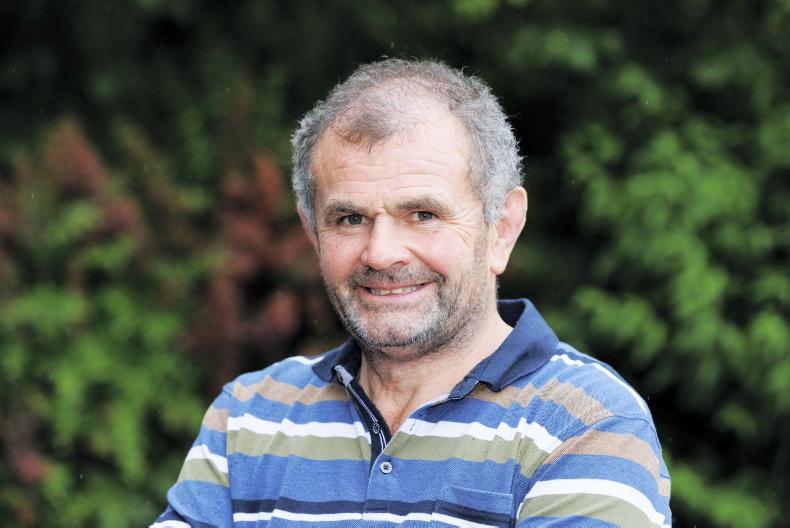
Bobby Hovenden, Laois dairy farmer, will speak at the Irish Grassland Association summer dairy tour.
Bobby is one of many farmers, consultants and researchers speaking at the Irish Grassland Dairy Conference, sponsored by Yara, which is on next Wednesday 20 July in the Talbot Hotel Clonmel.
Bobby, his wife Valerie and daughter Rachel farm 88ha of very free draining land just outside Durrow. The farm is made up of a 52ha milking platform with two outside blocks within a few kilometres of this. Herd performance is excellent, with the cows delivering 577kg of milk solids at 4.83% fat and 3.87% protein in 2021.
Last year the farm grew 13t of dry matter per hectare. In this part of Ireland low rainfall and drought are a constant threat and feeding silage mid-season is common. In the past, this happened once in every five years or so. In more recent times it’s been happening every year.
Downsizing
To aid expansion and grow the herd from within, Bobby kept an extra 15 heifers every year from 2015 to 2019. Since he made the decision to downsize his business he has reduced heifer numbers by a similar amount each year. The reasons he chose to reduce numbers are:
To have a manageable number of cows for Bobby and the relief milkers to handle.Bobby is experiencing a dry summer every year now and there hasn’t been a summer in the past 10 that he hasn’t had to feed bales.Health issues prompted a rethink on a sustainable cow number for Bobby and his farm.High stocking rate consequences
Bobby feels that the heavy stocking rate on the farm in the run up to 2019 caused milk solids per cow to drop. He delivered 533kg of milk solids per cow in 2018 and 520kg in 2019. “We’re now able to milk each cow out fully getting closer to 580kg of milk solids from cows – getting the 305 days of milking out of each of them. In previous years we were leaving milk behind,” he said.
Reducing the stocking rate has allowed him reduce fertiliser usage by approximately 20%, spreading about 125kg of nitrogen per hectare in 2021. “I can’t see any difference in grass growth or appearance with the lower nitrogen use,” said Bobby.
Due to the dry nature of his farm he aims to spread nitrogen in the middle of the grazing rotation when grass has a cover of 800 to 900kg of dry matter per hectare rather than when the cows have finished grazing the paddock.
From a financial perspective, Bobby is not seeing much of a difference in the bottom line. He said while he is taking less in he is also spending less. “I’ve struck a better balance between money and stress level on the farm and that has to be a big part of the decision making for me,” said Bobby.
Other speakers
Speaking alongside Bobby in session one at next week’s conference are Teagasc’s Brendan Horan and discussion group facilitator and dairy farmer Mary Kinston. A panel discussion will be held following their presentations with a focus on maximising profits and cutting costs. ‘Controlling the Controllables’ has become especially important in recent years with rising costs.
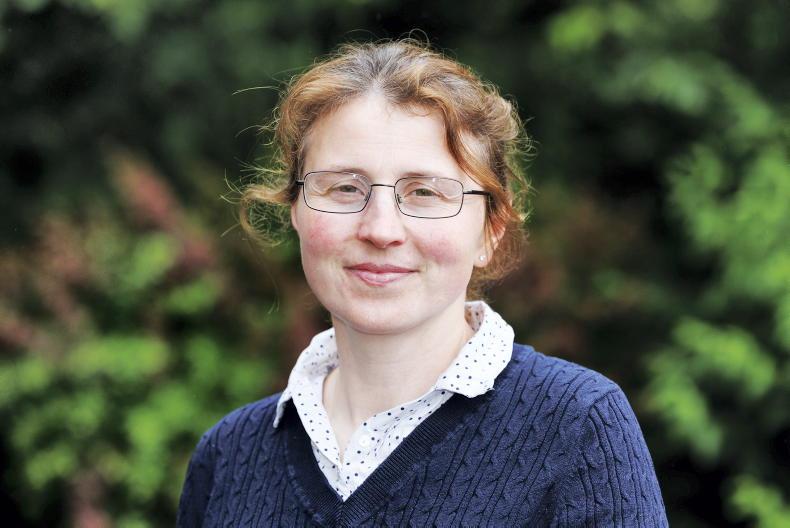
Mary Kinston, farm consultant will speak at the Irish Grassland Association dairy summer tour next week.
In session two, Teagasc’s Laurence Shaloo will examine Ireland’s greenhouse gas challenges. This will be followed by consultant Nollaig Heffernan and farmers Mark Cassidy and TJ Kelly where they will discuss ‘Attracting and retaining labour’.
Doing the basics
right to fulfil potential
The theme of this year’s IGA summer tour is ‘doing the basics right to fulfil potential’ and visitors will hear from two excellent farmers who have optimised output on their respective milking platforms through a focus on breeding, grassland and farm management. This year’s tour, sponsored by AIB takes place on Tuesday 19 July and will visit Tom Walsh in Co Kilkenny, and Denis Cody in Co Tipperary.
Tom Walsh farms near Johnstown, Co Kilkenny with his wife Norma. Now milking 130 cows, Tom spent a number of years working off farm, before returning home in 2003 to farm full time, milking 40 cows that year.
From day one, Tom put a big focus on breeding the right cows for his farm and his farm system with a focus on fertility and production.
Tom has bred a high milk solids herd producing over 500kg of milk solids per cow every year since milk quotas were removed in 2015. In 2021, 620 kg milk solids per cow (4.5% fat and 3.72% protein) were delivered to Glanbia. This was produced from a diet of approximately 1.5t of concentrate per cow, high quality grazed grass and grass silage.
In 2021, Tom calved 86% of the herd in six weeks with a calving interval of 364 days. A herd EBI of €182, puts the herd in the top 10% of herds in the country.
Tom’s farm is prone to summer drought, and while Tom has built a herd that can reward extra meal feeding in the summer, grassland management is key to driving performance on the farm.
Tom actively culls low performing cows from his herd each year and this coupled with breeding replacements from the best performing cows and excellent grazing management underpins his continued improvement in milk solids production over the years.
Denis
Denis Cody farms with his wife Carmel and his parents Eamon and Anne, near Clonmore, Templemore, Co. Tipperary.
They are milking on two platforms, one 50% owned and the second 100% leased. Cow numbers have quadrupled since 2010 and they are milking 400 cows in 2022.
In 2013, Denis leased a 21 hectare former dairy unit approximately 7 km from the home farm to start a second unit.
Starting with 40 cows, two additional parcels of land have been leased adjoining it to create a 48-hectare second dairy farm, milking 150 cows on this block. All cows are calved on the home farm, and cows moved from the home farm to the second unit from late February.
In 2021 an average of 520 kg milk solids was produced per cow (4.63% fat and 3.78% protein) to Centenary Co-op, with roughly 700 kg meal per head. The overall stocking rate is 2.5 livestock units per hectare farmed and the milking platforms are stocked at 3.2 cows/ha and 2.8 cows/ha.
Grassland management
Similar to Tom, Denis has a big focus on grassland management and fertility. Last year the farms grew approximately 14 tonnes of grass dry matter per hectare. In 2021, Denis calved 90% of the herd in six weeks and had a calving interval of 365 days.
Denis has two full time staff on the farm who have both been with him for over 10 years. Weekend and casual labour are also brought in, with the majority of machinery work contracted out.
Dairy summer meeting
The Irish Grassland Association Dairy Summer meeting takes place over two days next week.
On Tuesday there are two farm walks; Farm one is the farm of Tom and Norma Walsh farming near Johnstown in County Kilkenny on the Tipperary/Kilkenny border.
Farm two is the farm of Denis and Carmel Cody farming near Templemore in County Tipperary.
On Wednesday in Clonmel, County Tipperary there are two panel sessions to discuss optimum stocking rates for dairy farms and the next step for Ireland’s environmental challenges.
For bookings contact irishgrassland.ie or ring 087 962 6483
Reducing cow numbers in order to run an easier more sustainable system for their family business was the decision taken by Laois dairy farmer Bobby Hovenden. The dairy farm went from milking 163 cows at peak to 114 in 2022. Like many farmers the Hovendens used the quota removal to push up cow numbers. In the years leading up to quota abolition, around 100 black and white cows were milked. “There is a lot of talk about sustainability in farming. They’re talking about sustainability from an environmental perspective. I made the decision in 2019 to adopt a sustainable farming system for me,” said Bobby.

Bobby Hovenden, Laois dairy farmer, will speak at the Irish Grassland Association summer dairy tour.
Bobby is one of many farmers, consultants and researchers speaking at the Irish Grassland Dairy Conference, sponsored by Yara, which is on next Wednesday 20 July in the Talbot Hotel Clonmel.
Bobby, his wife Valerie and daughter Rachel farm 88ha of very free draining land just outside Durrow. The farm is made up of a 52ha milking platform with two outside blocks within a few kilometres of this. Herd performance is excellent, with the cows delivering 577kg of milk solids at 4.83% fat and 3.87% protein in 2021.
Last year the farm grew 13t of dry matter per hectare. In this part of Ireland low rainfall and drought are a constant threat and feeding silage mid-season is common. In the past, this happened once in every five years or so. In more recent times it’s been happening every year.
Downsizing
To aid expansion and grow the herd from within, Bobby kept an extra 15 heifers every year from 2015 to 2019. Since he made the decision to downsize his business he has reduced heifer numbers by a similar amount each year. The reasons he chose to reduce numbers are:
To have a manageable number of cows for Bobby and the relief milkers to handle.Bobby is experiencing a dry summer every year now and there hasn’t been a summer in the past 10 that he hasn’t had to feed bales.Health issues prompted a rethink on a sustainable cow number for Bobby and his farm.High stocking rate consequences
Bobby feels that the heavy stocking rate on the farm in the run up to 2019 caused milk solids per cow to drop. He delivered 533kg of milk solids per cow in 2018 and 520kg in 2019. “We’re now able to milk each cow out fully getting closer to 580kg of milk solids from cows – getting the 305 days of milking out of each of them. In previous years we were leaving milk behind,” he said.
Reducing the stocking rate has allowed him reduce fertiliser usage by approximately 20%, spreading about 125kg of nitrogen per hectare in 2021. “I can’t see any difference in grass growth or appearance with the lower nitrogen use,” said Bobby.
Due to the dry nature of his farm he aims to spread nitrogen in the middle of the grazing rotation when grass has a cover of 800 to 900kg of dry matter per hectare rather than when the cows have finished grazing the paddock.
From a financial perspective, Bobby is not seeing much of a difference in the bottom line. He said while he is taking less in he is also spending less. “I’ve struck a better balance between money and stress level on the farm and that has to be a big part of the decision making for me,” said Bobby.
Other speakers
Speaking alongside Bobby in session one at next week’s conference are Teagasc’s Brendan Horan and discussion group facilitator and dairy farmer Mary Kinston. A panel discussion will be held following their presentations with a focus on maximising profits and cutting costs. ‘Controlling the Controllables’ has become especially important in recent years with rising costs.

Mary Kinston, farm consultant will speak at the Irish Grassland Association dairy summer tour next week.
In session two, Teagasc’s Laurence Shaloo will examine Ireland’s greenhouse gas challenges. This will be followed by consultant Nollaig Heffernan and farmers Mark Cassidy and TJ Kelly where they will discuss ‘Attracting and retaining labour’.
Doing the basics
right to fulfil potential
The theme of this year’s IGA summer tour is ‘doing the basics right to fulfil potential’ and visitors will hear from two excellent farmers who have optimised output on their respective milking platforms through a focus on breeding, grassland and farm management. This year’s tour, sponsored by AIB takes place on Tuesday 19 July and will visit Tom Walsh in Co Kilkenny, and Denis Cody in Co Tipperary.
Tom Walsh farms near Johnstown, Co Kilkenny with his wife Norma. Now milking 130 cows, Tom spent a number of years working off farm, before returning home in 2003 to farm full time, milking 40 cows that year.
From day one, Tom put a big focus on breeding the right cows for his farm and his farm system with a focus on fertility and production.
Tom has bred a high milk solids herd producing over 500kg of milk solids per cow every year since milk quotas were removed in 2015. In 2021, 620 kg milk solids per cow (4.5% fat and 3.72% protein) were delivered to Glanbia. This was produced from a diet of approximately 1.5t of concentrate per cow, high quality grazed grass and grass silage.
In 2021, Tom calved 86% of the herd in six weeks with a calving interval of 364 days. A herd EBI of €182, puts the herd in the top 10% of herds in the country.
Tom’s farm is prone to summer drought, and while Tom has built a herd that can reward extra meal feeding in the summer, grassland management is key to driving performance on the farm.
Tom actively culls low performing cows from his herd each year and this coupled with breeding replacements from the best performing cows and excellent grazing management underpins his continued improvement in milk solids production over the years.
Denis
Denis Cody farms with his wife Carmel and his parents Eamon and Anne, near Clonmore, Templemore, Co. Tipperary.
They are milking on two platforms, one 50% owned and the second 100% leased. Cow numbers have quadrupled since 2010 and they are milking 400 cows in 2022.
In 2013, Denis leased a 21 hectare former dairy unit approximately 7 km from the home farm to start a second unit.
Starting with 40 cows, two additional parcels of land have been leased adjoining it to create a 48-hectare second dairy farm, milking 150 cows on this block. All cows are calved on the home farm, and cows moved from the home farm to the second unit from late February.
In 2021 an average of 520 kg milk solids was produced per cow (4.63% fat and 3.78% protein) to Centenary Co-op, with roughly 700 kg meal per head. The overall stocking rate is 2.5 livestock units per hectare farmed and the milking platforms are stocked at 3.2 cows/ha and 2.8 cows/ha.
Grassland management
Similar to Tom, Denis has a big focus on grassland management and fertility. Last year the farms grew approximately 14 tonnes of grass dry matter per hectare. In 2021, Denis calved 90% of the herd in six weeks and had a calving interval of 365 days.
Denis has two full time staff on the farm who have both been with him for over 10 years. Weekend and casual labour are also brought in, with the majority of machinery work contracted out.
Dairy summer meeting
The Irish Grassland Association Dairy Summer meeting takes place over two days next week.
On Tuesday there are two farm walks; Farm one is the farm of Tom and Norma Walsh farming near Johnstown in County Kilkenny on the Tipperary/Kilkenny border.
Farm two is the farm of Denis and Carmel Cody farming near Templemore in County Tipperary.
On Wednesday in Clonmel, County Tipperary there are two panel sessions to discuss optimum stocking rates for dairy farms and the next step for Ireland’s environmental challenges.
For bookings contact irishgrassland.ie or ring 087 962 6483






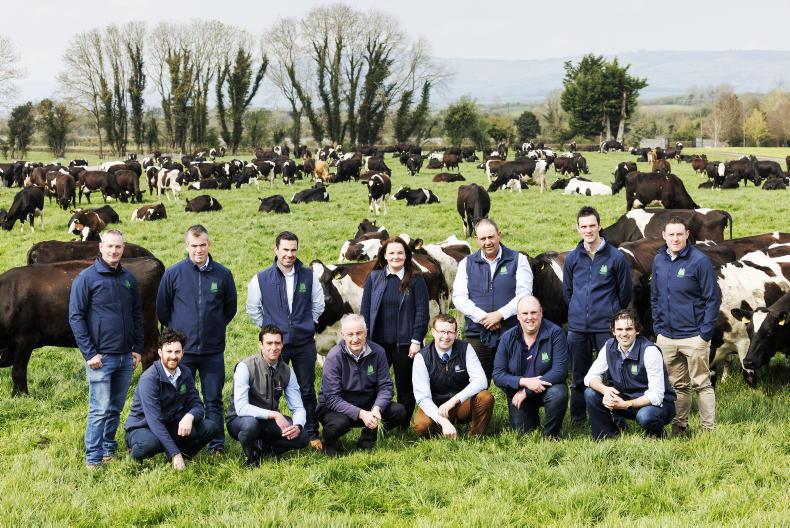
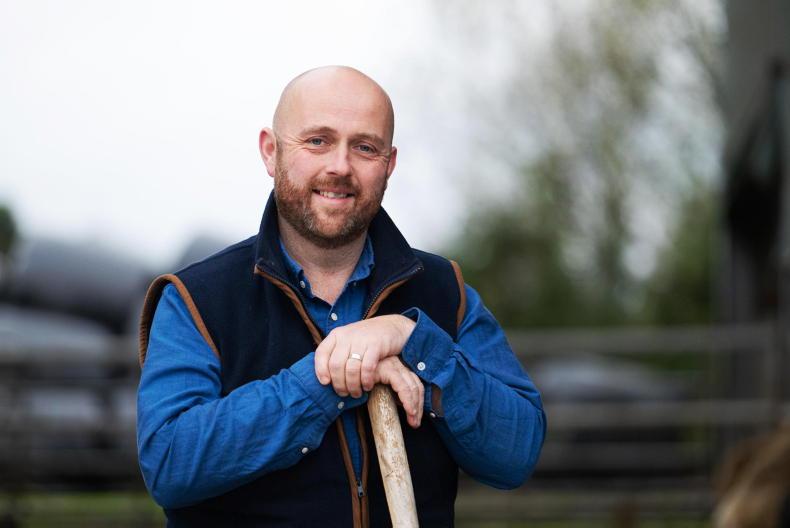

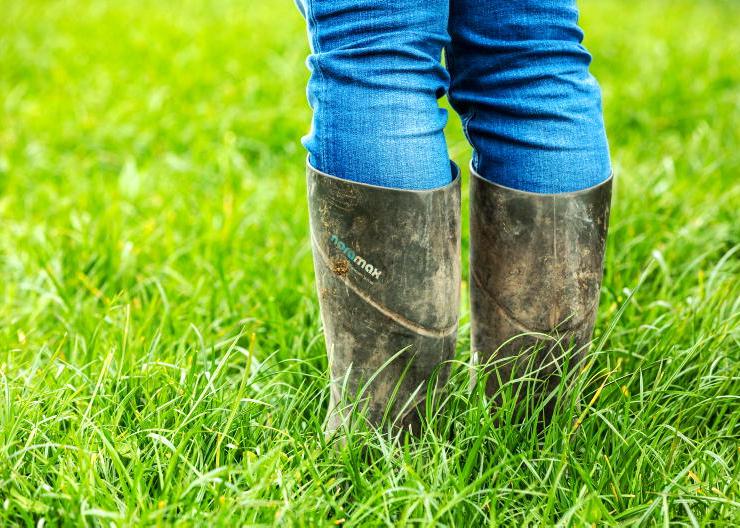
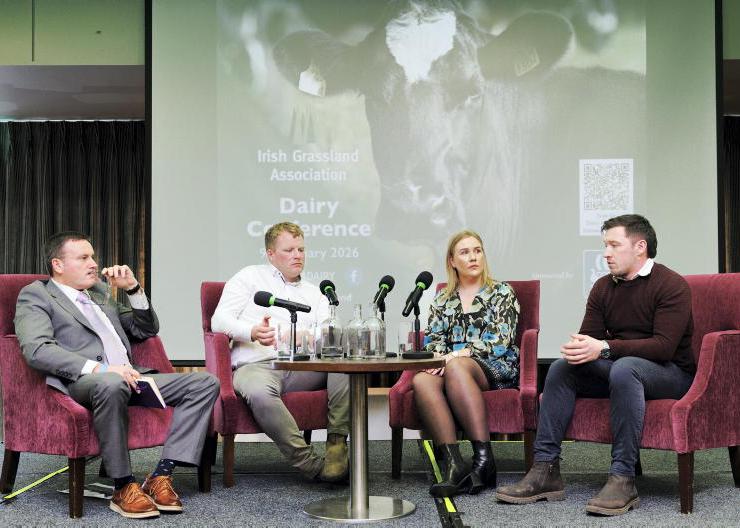
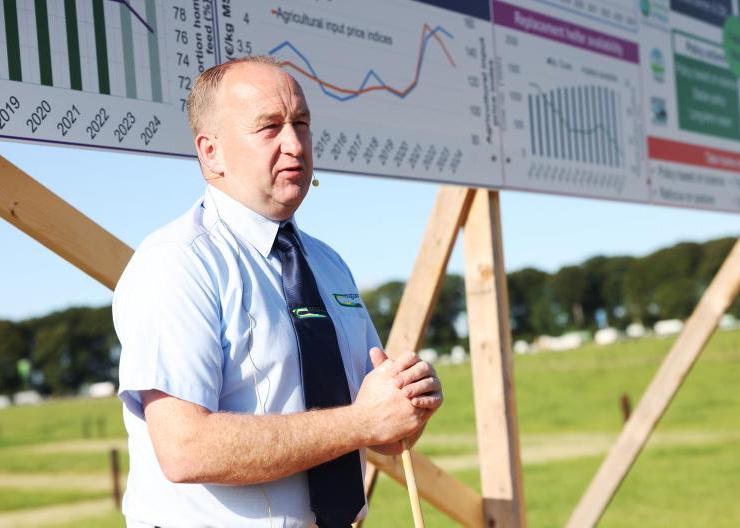
SHARING OPTIONS